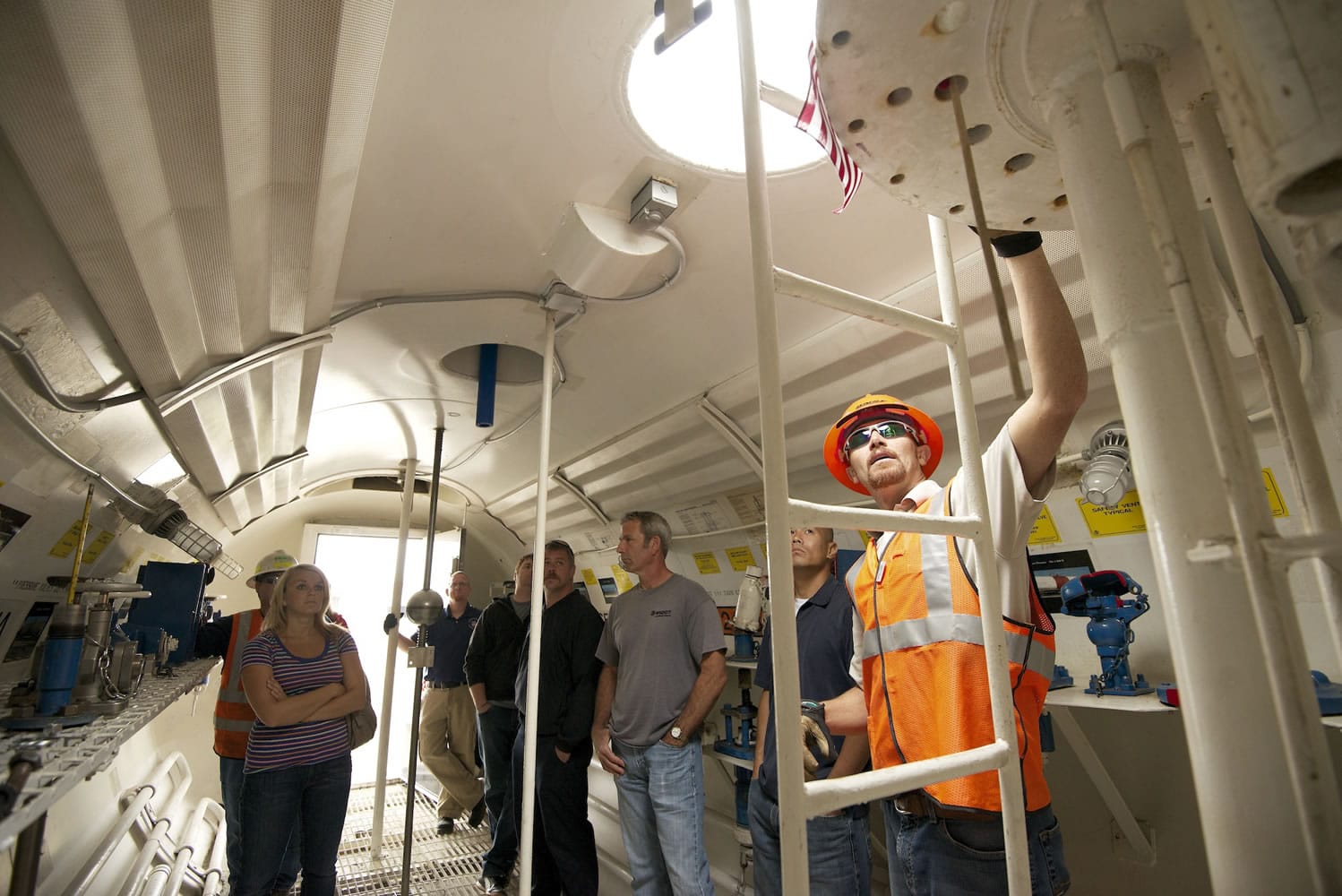Emergency responders gathered at the BNSF Railway Vancouver terminal on Tuesday to train for a situation they hope never to face: responding to a release of hazardous materials from a freight train.
About 50 people from both Washington and Oregon received hazmat training over the course of the day from BNSF Railroad personnel and hazmat experts. About 150 people are expected to attend during the three-day training that runs through Thursday. It’s offered by BNSF in coordination with the Transportation Community Awareness and Emergency Response program, a national voluntary outreach program.
“Its training you can’t get from a book,” said Scott Willis, a captain and public information officer for the Vancouver Fire Department.
Willis, who previously worked on the fire department’s Hazardous Materials Response Team, attended the Tuesday session. For emergency responders, he said, the training is “completely invaluable,” he said.
Despite recent national concerns over rail safety, the training is not tied to the July 6 railroad disaster in eastern Canada. A runaway train, carrying crude oil from the Bakken shale fields of North Dakota, went off the tracks and exploded, killing 47 people.
Still, BNSF personnel are keeping a close eye on the Canadian investigation and can learn from that tragedy, said Gus Melonas director of public affairs for BNSF in six states including Washington.
The hazardous materials training is nothing new. For more than 30 years, BNSF has brought hazmat training to more than 4,000 emergency responders in 28 states and two Canadian provinces on average each year, Melonas said.
“Nothing comes before safety,” Melonas aid. “That’s the purpose of this program.”
The Vancouver terminal stays busy throughout the year, with traffic coming in from the Columbia River Gorge and Seattle, Melonas said. Classified hazardous material handled by BNSF makes it to the destination, without a release of product “99.9 percent” of the time, he emphasized.
“We haul everything from A to Z,” Melonas said.
Patrick Brady, assistant director of hazardous materials for BNSF, led the Vancouver session Tuesday and will do so for the next two days. Participants were briefed on safety and procedural guidelines and climbed in and on top of two tank cars while discussing additional safety measures along the way.
Traveling from state to state, the two tank cars are used for training purposes only. One of the cars was specifically designed to transport oil, which BNSF has transported for years, Melonas said.
The last time there was a hazard-related death at the Vancouver terminal was in 1981 after a train derailed and one employee entered the danger zone around the train, he said.
“Preparedness is so critical,” he said.
The goal through these training programs is for BNSF to protect employees, the public, the railroad and the environment, Melonas said.
Because the Vancouver terminal is a major transfer hub in the BNSF’s Northwest operations, the training is offered regularly, he said.
“It’s critical that local emergency responders are on the same page as the BNSF team to ensure the safety of the community and environment,” Melonas said. “The process will continue for years to come.”



